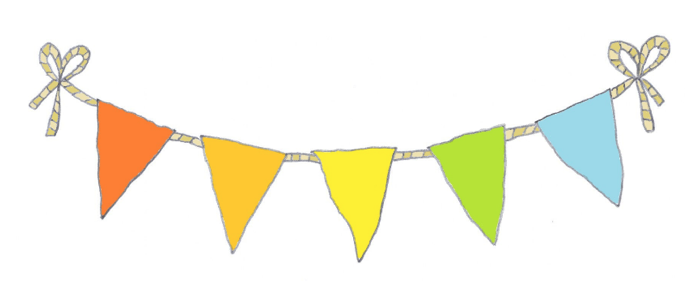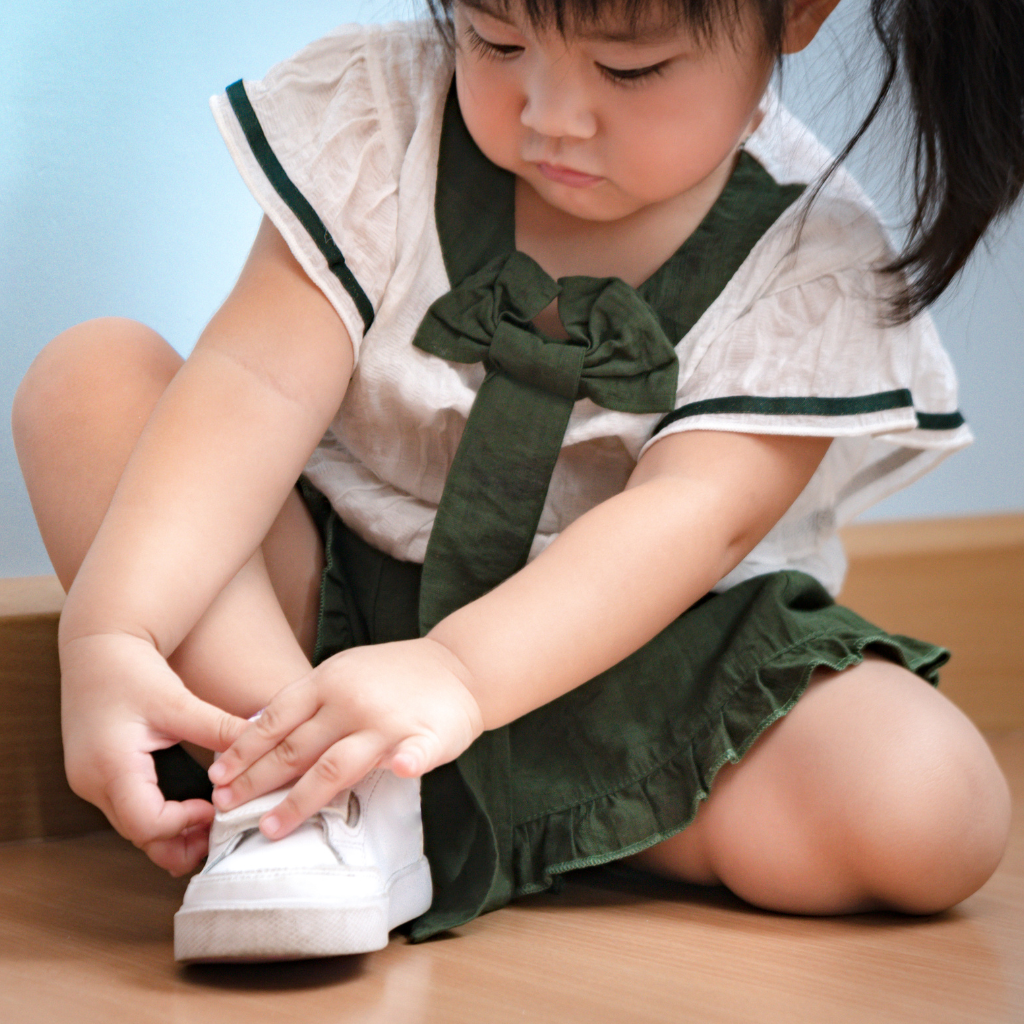What is Montessori?
Our educational philosophy is based on an approach called the 'Montessori Method'. Briefly this method of learning focuses on helping children develop the self-belief & confidence to become independent and productive members of their communities; to think and make good choices for themselves; to treat others and their environment with respect and kindness; and to enjoy their work.
(Montessorians call play ‘work’, because all children learn through play and because play has the same importance for a child as work does for an adult.)
To help facilitate these learning goals, the classroom is laid out so that children can take responsibility for it by themselves. Wherever possible, tools, utensils & furniture are child-sized . Children are helped and encouraged to keep the classroom clean & tidy, to take care of their own personal needs as much as possible and to look after themselves & others as well as plants & animals that might share their space.
Teaching materials are divided into areas of learning. They are carefully designed to teach skills and concepts by way of graded activities that logically build & follow on from each other. Learning activities also make use of all the child’s senses, recognizing that all children learn through different channels. Activities are presented as self-contained units on trays or in baskets and easily accessible on open shelves. Because teachers make sure that every activity on the shelves is a good one, children are free to choose to work with the activities that interest them most.
Montessori teachers have extensive training in child development as well as their educational curriculum. This means that they can actively help all children to become interested in, develop and work in all areas of learning – even if this means that they have to design and make a special activity just for one child. Children can choose to work by themselves, with a friend or in small groups, either inside or outside. Most importantly, all learning is hands-on, so if you ask a child who taught them a particular skill, they are most likely to answer that they learnt it by themselves.
To ensure that everyone can live and work in harmony, there is a set of classroom rules that are easily understood & followed and gently but consistently enforced.
Running alongside all of this industrious activity is the over-riding aim that we hope to achieve by giving our children this type of education. We would like to give them the confidence & skills to be able to grow up into people who are able to forge positive relationships, lead productive lives, solve conflicts and protect their environment.
It is precisely these ideals that won Maria Montessori (Italy’s first ever female doctor, child psychologist, educator & founder of the method) repeated nominations for the Nobel Peace Prize. Although Montessori developed this method of education nearly 100 years ago, all major aspects of her work have now been verified and confirmed by recent child developmental research and adopted by child-care settings around the world as best-practice.
What is on our shelves ?
All areas of learning are available to our children every day so that they can choose to work with the activities that interest them most. It is our job as teachers to make sure that our children become interested in all areas of learning, even if that means that we have to make a special activity just for one child.
Please come and see for yourself…you are very welcome!
Classroom
A typical Montessori classroom is plain and uncluttered to help create a calm and relaxing work space. Activities are set out as complete units on open shelves and broken down into areas of learning. Tools, implements & cleaning utensils are child-sized and help children to become independent as they can do things for themselves and children are helped to keep their classroom neat & tidy.
Everyday Activities
Probably the most important activities in a Montessori nursery classroom. Children love copying everyday activities they witness in their homes and communities. For adults tasks such as ‘opening & closing jars’ or ‘washing dishes’ might all be routine, mundane tasks to be completed as quickly as possible. Children, however, want to do this type of work to learn how to do things for themselves and to be like grown ups.
Snack Table
Grown ups who come to see our schools are often surprised that we use real glasses and plates in our snack area (albeit very sturdy ones). We do this because, firstly it is much nicer drinking from glass than plastic. Secondly, using real glass shows our children that we trust and respect them. In turn, we help them understand that these materials have to be treated with respect so as not to break them.
Exploring our Senses
Children learn by exploring the environment using all of their senses. Lots of modern toys are geared to this, but we think that many overload our children with too much information - shapes, sounds, colours, textures & smells are all mixed up together. Of course all of these qualities are important to explore, but we like to do this by giving our children learning activities that focus on one particular aspect or quality at a time.
Numeracy
Many adults shy away from maths. We think this is partly because they did not get enough chances as children to explore mathematical ideas and concepts with hands-on materials. We have an extensive maths-based toolkit of fun learning activities to practice sorting, sequencing, matching, shapes, amounts & patterns…even grown-ups want to stay and play.
Literacy
We want to create a rich language environment for our children. Group & individual discussions using open-ended questions give children the chance to express opinions, formulate ideas and practice different speech patterns as well as new vocabulary. Fine motor activities prepare for writing. Rhyming songs & ‘I spy’ games develop phonemic awareness.
Cultural Activities
All the above areas of learning focus on helping our children to acquire skills. This area of learning uses all of these skills to let our children acquire knowledge. Here we focus specifically on what is most important in our own environment, society & culture. Every year have at least one dinosaur enthusiast (paeleontologist) or someone who loves construction (civil engineer)!
Creative
Area
Of course it's nice to take things home that look good on walls and that are instantly recognizable for what they are supposed to be. We like making these sorts of arts & crafts in our group sessions but this is not what our creative area is all about. Here children have free access to a great variety of materials & media and can explore them free from the preconceptions of others.
Imaginative Play
We have taken inspiration from the Steiner/Waldorf philosophy of education for our block & imaginative play area. Here we have beautiful large wooden blocks, natural materials like pine cones & shells and large colourful silk scarves & a wooden clothes horses for den building. A little bit less Steiner but nevertheless lots of fun we also like to throw in some realistic animal figures or toy cars from time to time.
Outdoor Play
Kicking, climbing, running, throwing and any other forms of physical expression are just as important for our children as learning to count or write. Both schools have large, safe, enclosed gardens where we can do all of these sorts of things without too much restraint. Otherwise we like to provide open ended play resources that allow children to use their imagination in their play.
Quiet Area
‘Working’ is hard work. When it all gets a little bit too much we have lovely little corners with some cushions or a little sofa. Rules here are slightly different - the code is mostly for peace & quiet. There are books, blankets and we also have a CD player with music and short stories.
Peace
Learning to live in harmony with fellow human beings without feeling that you are losing out is a difficult skill to master, even for adults. We want to give children the tools to help them sort out their own squabbles. To do this we use sand-timers to make sharing and turn taking easier, floor mats to demarcate work spaces so everyone understands who is working with what and feeling pebbles to explain how we are feeling when our emotions run a little high!















